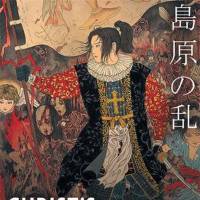Jonathan Clement's latest book focuses on the troubled arrival of Christianity to Japan, and the Shimabara Rebellion, an uprising of Catholic Christian peasants in 1637-38.
Christ's Samurai, by Jonathan Clements
288 pages
Robinson, Nonfiction.
Japan's early Christians were branded with hot irons, dipped repeatedly in boiling water and crucified in an attempt to stamp out the faith and its followers. In a particularly inventive and gruesome method, believers were straddled with straw coats made of grass and set on fire. Clements outlines how a pregnant woman was kept in a submerged cage; both mother and the newborn baby died — an incident that may have triggered the Shimabara Rebellion.
Despite the long list of characters — many of them Japanese who had taken biblical names — Clements presents a concise and lucid account of a unique period in Japan's history. It was an age when the country was trying to shut itself off from the world, and yet a strange global religion was taking root, despite government efforts to eradicate it.
The shogun's forces didn't cover themselves in glory in their many bungled attempts to overpower the rebels, many of whom were farmers with little or no artillery. But after a four month siege, the rebels — led by Japanese Christian Jerome Amakusa — were defeated, and thousands of Christians slaughtered.
The eventual success of the shogun's forces was, as Clements writes, "a genocide against fellow Japanese, all to create a Japan that could claim unity of belief and purpose."



